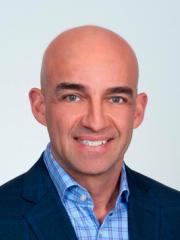#19. Principles of Steady State Determination During Indirect Calorimetry
Welcome to this podcast series on Indirect Calorimetry. In this final installment on the series, Dr. Robert Bilkovski will focus on the assessment of steady state and the pitfalls that may impact reliable energy expenditure measurements utilizing indirect calorimetry.
Show Notes
Transcript
Speakers
Welcome to this podcast series on Indirect Calorimetry. In this final installment on the series, Dr. Robert Bilkovski will focus on the assessment of steady state and the pitfalls that may impact reliable energy expenditure measurements utilizing indirect calorimetry.
In this final installment on the series focusing on nutritional support and the role of indirect calorimetry, our focus will be on the assessment of steady state and the pitfalls that may impact reliable energy expenditure measurements utilizing indirect calorimetry.
As we have covered in earlier podcasts from this series, indirect calorimetry can be an accurate tool to measure energy expenditure but it is important to stress that it simply takes a snapshot view of the patient in order to understand the energy consumption needs throughout a day.
That being said, obtaining an indirect calorimetry measurement while a patient is being perturbed may not represent the actual or true energy requirements of the patient.
Examples of these perturbations include the following.
- No recent ventilator setting changes and especially not during a weaning trial.
- No nursing treatments that may agitate the patient, for instance endotracheal tube suctioning or wound dressing changes that may be painful.
- Being hemodynamically stable, for instance no recent fluid challenges or use of hemodialysis. More importantly, in the first 1-2 days of sepsis, the hemodynamic demands are high.
- No recent administration of therapeutics that can alter the patient's acid-base balance; and lastly,
- Stable temperature, ideally when the patient is afebrile.
Before pressing onto the topic of steady state in more detail, let us first remind ourselves of the several limitations inherent to indirect calorimetry and should serve as a checklist prior to obtaining a measurement:1
- Make sure there are no leaks within the circuit.
- Avoid or view the outputs with great caution when the fraction inspired oxygen concentration is greater than 60%.
- Avoid use during hemodialysis or peritoneal dialysis.
- Monitor and minimize humidity in the breathing circuit.
The foundation of steady state measurements were laid by McClave in a 2003 study wherein a five-minute interval was codified to establish the minimum steady state observation window to inform 24-hour energy expenditure.
In addition, the coefficient of variability of VCO2 and VO2 were equally established with a threshold of acceptance being less than or equal to 10%.2
Interestingly, this criteria is not readily attained in an ICU setting.
In fact, the steady state criteria of five minutes and CV less than or equal to 10% was not achieved in 25 patients studied by McClave.
Similarly, Reeves conducted a study evaluating shorter observation windows but first recognized that steady state criteria defined by McClave was only fulfilled in 52% of their patients evaluated.
The authors found that shortening the time period has drawbacks and increases variability to informing caloric requirements.3
Historically, 30 minutes was determined to be the optimal steady state window.
In addition, the greatest error in energy expenditure measurement occurred between 3 and 11 p.m. Therefore, has been recommended to measure indirect calorimetry when steady state conditions are met between the hours of 11 p.m. and 3 p.m.4
To summarize, steady state should be considered when no active interventions are ongoing or have recently concluded and a sampling window of 5 to 10 minutes should be observed where the coefficient of variation is less than or equal to 10% for both VCO2 and VO2.
By following these principles highlighted during this podcast, you can pursue improved accuracy in determining energy expenditure and in turn optimizing nutritional support for your patients.
This concludes the final podcast on the series focusing on nutritional support and use of indirect calorimetry.
Thank you for your interest in listening to this podcast series.
Reference:
- Oshima, T., et al. (2017). "Indirect calorimetry in nutritional therapy. A position paper by the ICALIC study group." Clin Nutr 36(3): 651-662.
- McClave, S.A., Spain, D.A., Skolnick, J.L., Lowen, C.C., Kleber, M.J., Wickerham, P.S., Vogt, J.R. and Looney, S.W., 2003. Achievement of steady state optimizes results when performing indirect calorimetry. Journal of Parenteral and Enteral Nutrition, 27(1), pp.16-20.
- Reeves, M.M., Davies, P.S., Bauer, J. and Battistutta, D., 2004. Reducing the time period of steady state does not affect the accuracy of energy expenditure measurements by indirect calorimetry. Journal of applied physiology, 97(1), pp.130-134.
- Smyrnios, N.A., Curley, F.J. and Shaker, K.G. (1997), Accuracy of 30-Minute Indirect Calorimetry Studies in Predicting 24-Hour Energy Expenditure in Mechanically Ventilated, Critically Ill Patients. Journal of Parenteral and Enteral Nutrition, 21: 168-174.

Dr. Robert N. Bilkovski, MD, MBA
President, RNB Ventures Consulting Inc.
Dr. Bilkovski has broad management experience, having served in leadership roles in multiple Fortune 500 companies overseeing medical affairs and clinical development in IVD, medical device, and pharmaceuticals industries. Some of the companies where he served in leadership roles include Hospira, GE HealthCare, Abbott Laboratories, and Becton Dickinson. Robert currently is the President of RNB Ventures Consulting Inc. providing strategic consulting in the field of medical and clinical affairs for medical device and diagnostic companies.
Dr. Bilkovski received his undergraduate degree in biochemistry with a focus in genetic engineering at McMaster University in Hamilton, Ontario, Canada. Robert completed his medical training at Rosalind Franklin University/The Chicago Medical School and subsequently pursued specialization in emergency medicine. Lastly, Dr. Bilkovski earned his MBA at the University of Notre Dame as part of his transition from clinical medicine to medical industry.













